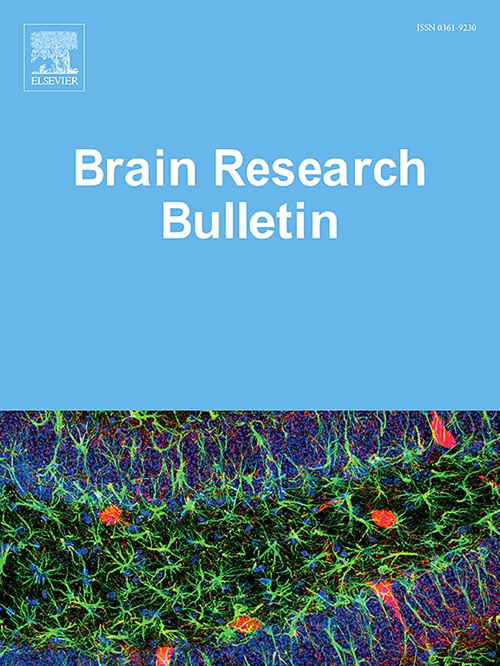Neuroprotective effects of hirudin against cerebral ischemia-reperfusion injury via inhibition of CCL2-mediated ferroptosis and inflammatory pathways
IF 3.5
3区 医学
Q2 NEUROSCIENCES
引用次数: 0
Abstract
Cerebral ischemia-reperfusion injury (CIRI) is a leading cause of neurological impairment in stroke, primarily correlated to oxidative stress, inflammation, and ferroptosis. This study investigates the neuroprotective effects of hirudin on CIRI, focusing on its role in modulating neuronal survival, oxidative stress, and ferroptosis markers through inhibition of CCL2. A middle cerebral artery occlusion (MCAO) model in mice and an oxygen-glucose deprivation/reoxygenation (OGD/R) model in HT22 cells were used to simulate ischemic conditions. Hirudin significantly improved neurological function and reduced cerebral edema and infarct size in the MCAO model. In vitro, hirudin enhanced neuronal viability and reduced apoptosis in OGD/R-stimulated cells. Integrative network pharmacology and transcriptomic analysis identified CCL2 as a potential target of hirudin. Hirudin treatment suppressed CCL2 expression, which in turn reduced the TLR4/NF-κB signaling activation, thereby mitigating ferroptosis and inflammatory responses in ischemic neurons. Overexpression of CCL2 partially reversed these protective effects, underscoring its role in ischemic injury. These findings suggest that hirudin alleviates CIRI by modulating CCL2 and preventing ferroptosis, offering insights into its potential as a therapeutic agent for ischemic conditions.
求助全文
约1分钟内获得全文
求助全文
来源期刊

Brain Research Bulletin
医学-神经科学
CiteScore
6.90
自引率
2.60%
发文量
253
审稿时长
67 days
期刊介绍:
The Brain Research Bulletin (BRB) aims to publish novel work that advances our knowledge of molecular and cellular mechanisms that underlie neural network properties associated with behavior, cognition and other brain functions during neurodevelopment and in the adult. Although clinical research is out of the Journal''s scope, the BRB also aims to publish translation research that provides insight into biological mechanisms and processes associated with neurodegeneration mechanisms, neurological diseases and neuropsychiatric disorders. The Journal is especially interested in research using novel methodologies, such as optogenetics, multielectrode array recordings and life imaging in wild-type and genetically-modified animal models, with the goal to advance our understanding of how neurons, glia and networks function in vivo.
 求助内容:
求助内容: 应助结果提醒方式:
应助结果提醒方式:


